Orexin A Peptide is a neuropeptide that researchers study for its role in the brain’s arousal and alertness systems. Studies suggest it helps regulate wakefulness, mental focus, and emotional balance. Because of this, scientists are exploring how it connects to energy levels and overall cognitive performance.
When researchers look at Orexin A, they often ask how it affects mood stability, motivation, and the ability to stay focused for a longer time. Early findings suggest this peptide may influence pathways linked to sleep, attention, and stress response.
In this article, we explore how Orexin A relates to brain activity, daily functioning, and focus. We also look at Selank and Semax, two other peptides studied for their impact on mood, energy, and mental clarity.
Explore Orexin A Peptide from Direct Peptides , a neuropeptide studied for its role in wakefulness, focus, and energy regulation in cognitive research.
Understanding the link between Orexin A and brain function begins with how it communicates across neural systems. In the brain, orexin binds to two receptors called OX1R and OX2R. When activated, these receptors excite neurons and strengthen signaling in circuits that control arousal and focus. Researchers note that orexin neurons in the hypothalamus project widely, affecting systems that release dopamine, norepinephrine, and serotonin. This broad influence links the peptide to alertness and attention.
By driving these neural pathways, Orexin A helps balance activity between wakefulness and rest. It keeps focus steady by reducing competing “sleep signals” while promoting energy and motivation. These effects on synaptic transmission explain why scientists study its role in mood and mental performance.
As research continues to uncover how Orexin A affects neural communication, another important question emerges—how does this translate into measurable mental performance?
Research suggests Orexin A Peptide has a strong role in sustaining cognitive performance. Studies connect higher orexin activity with better focus, longer attention span, and stronger working memory. These skills allow the brain to take in information, hold it, and use it when solving problems. Researchers also explore how orexin A supports learning capacity by keeping mental clarity steady even when distractions are present.
Beyond attention and memory, orexin A is tied to motivation and decision-making. Findings show it may help reduce mental fatigue and keep performance steady under pressure. By supporting resilience in stressful moments, Orexin A gives researchers insight into how the brain stays effective during challenging tasks. This has made it an important peptide of interest in studies of cognition and behavior.
Since focus and cognitive stamina are so closely linked with alertness, scientists have also turned their attention to how Orexin A maintains balance between sleep and wakefulness, a key part of overall mental function.
Explore Peptide Supplies at Direct Peptides for all your reconstitution requirements.
Stable sleep–wake patterns depend on orexin’s ability to keep the brain in a steady state of alertness. Instead of letting wakefulness break into fragments, it holds focus across longer periods. Studies link the absence of orexin to narcolepsy, where sudden sleep attacks replace normal rhythm. These findings show why researchers see orexin as central to daytime energy and alert stability.
Research also connects Orexin A Peptide with circadian timing. By working alongside the body’s internal clock, it helps align sleep and activity with daily cycles. Some studies on Selank suggest that by shaping GABA and serotonin activity, it may also support smoother rest, giving researchers a point of comparison in sleep regulation studies.
With both peptides showing potential effects on rest and alertness, researchers have begun comparing them more directly to understand how their functions overlap—and how they differ.
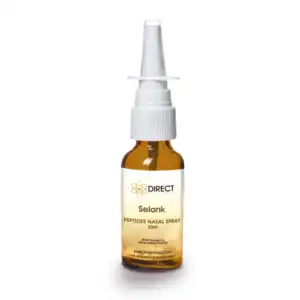 Research shows Orexin A Peptide plays a role in how the brain responds to demanding conditions. Increased orexin activity is linked to stronger stress reactions, keeping the body alert but sometimes leaving recovery systems under strain. This connection has made orexin a target in studies on stress vulnerability and how disrupted signaling may affect sleep quality.
Research shows Orexin A Peptide plays a role in how the brain responds to demanding conditions. Increased orexin activity is linked to stronger stress reactions, keeping the body alert but sometimes leaving recovery systems under strain. This connection has made orexin a target in studies on stress vulnerability and how disrupted signaling may affect sleep quality.
Selank, by contrast, is studied for its calming influence. It regulates GABA and serotonin pathways, helping reduce anxious responses and promote emotional balance. Instead of amplifying arousal, Selank helps reduce stress reactions, and this calming effect may support more stable rest and consistent sleep quality.
While Orexin A and Selank show distinct effects, another peptide Semax has gained attention for its influence on focus, clarity, and learning capacity.
Discover Selank from Direct Peptides , a research peptide known for its potential to support emotional balance, stress response, and relaxation through GABA modulation.
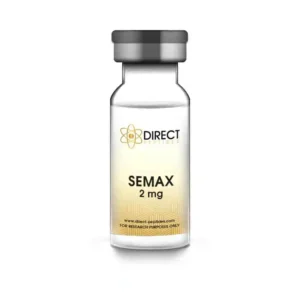 Semax is widely studied for its effects on learning, memory, and mood regulation. Research shows it can increase brain-derived neurotrophic factor (BDNF), a protein that supports plasticity and resilience in neural circuits. By enhancing these pathways, Semax may promote steadier mood and greater clarity during demanding mental tasks.
Semax is widely studied for its effects on learning, memory, and mood regulation. Research shows it can increase brain-derived neurotrophic factor (BDNF), a protein that supports plasticity and resilience in neural circuits. By enhancing these pathways, Semax may promote steadier mood and greater clarity during demanding mental tasks.
Unlike Orexin A Peptide, which is tied more closely to arousal and sleep–wake regulation, Semax appears to act on dopamine and serotonin activity, helping improve emotional balance and motivation. Findings suggest it may sharpen short-term memory and extend attention span, skills that support daily productivity.
Because it works through neurotrophic and neurotransmitter systems, Semax gives researchers a different model than Orexin A when exploring how peptides can influence mood, energy, and focus.
As more data emerge, scientists are now comparing all three peptides side by side to see how their effects align and where they diverge.
Explore Semax from Direct Peptides , a peptide studied for its ability to enhance focus, learning, and cognitive performance through neurotrophic activity.
Although Orexin A Peptide, Selank, and Semax are all studied for their potential to support mood, energy, and focus, they operate through distinct biological systems. Each peptide affects how the brain manages alertness, calmness, and mental clarity, influencing different aspects of cognitive performance.
Orexin A is most connected to sustained energy and motivation, while Selank is known for its role in emotional balance and stress control. Semax stands out for its impact on cognitive precision, helping maintain concentration and mental sharpness during complex or prolonged activity.
The table below highlights the main differences between Orexin A, Selank, and Semax — showing how each peptide contributes differently to mental performance, balance, and focus.
| Peptide | Core Focus Area | Unique Mechanism / Effect |
|---|---|---|
| Orexin A Peptide | Energy regulation and sustained alertness | Activates neural pathways that control wakefulness, motivation, and attention stability |
| Selank | Emotional balance and stress recovery | Modulates inhibitory neurotransmitters to promote relaxation and restore calm focus |
| Semax | Cognitive endurance and focus efficiency | Enhances neural communication and supports executive function for clearer, sustained thought |
Understanding these distinctions provides a clearer view of how different peptides influence mood, cognition, and performance—and why Orexin A remains central to ongoing studies.
The growing interest in Orexin A Peptide reflects how central it has become to modern cognitive research. Scientists continue to study its influence on alertness, motivation, and emotional regulation, exploring how it supports the brain’s ability to stay balanced and focused under pressure. Ongoing work also examines its interaction with other peptides, including Selank and Semax, to better understand how multiple pathways shape mood and mental endurance.
At Direct Peptides, we supply high-quality research peptides to laboratories and institutions advancing this work. By supporting continued exploration, we aim to help deepen scientific understanding of how Orexin A contributes to sustained focus, energy balance, and cognitive health.
1 Katzman MA, Katzman MP. Neurobiology of the Orexin System and Its Potential Role in the Regulation of Hedonic Tone. Brain Sci. 2022 Jan 24;12(2):150.
2 Tsujino N, Sakurai T. Role of orexin in modulating arousal, feeding, and motivation. Front Behav Neurosci. 2013 Apr 18;7:28.
3 Sakurai T. Roles of orexin/hypocretin in regulation of sleep/wakefulness and energy homeostasis. Sleep Med Rev. 2005 Aug;9(4):231-41.
4 Mavanji V, Perez-Leighton CE, Kotz CM, Billington CJ, Parthasarathy S, Sinton CM, Teske JA. Promotion of Wakefulness and Energy Expenditure by Orexin-A in the Ventrolateral Preoptic Area. Sleep. 2015 Sep 1;38(9):1361-70.
5 Panikratova YR, Lebedeva IS, Sokolov OY, Rumshiskaya AD, Kupriyanov DA, Kost NV, Myasoedov NF. Functional Connectomic Approach to Studying Selank and Semax Effects. Dokl Biol Sci. 2020 Jan;490(1):9-11.
Explore ALL Peptide Vials from Direct Peptides today, your trusted supplier of premium clinical-grade peptides online.
Studies have highlighted that Orexin A activates OX1R and OX2R receptors, strengthening neural circuits linked to wakefulness and attention. This helps maintain clearer, more sustained focus by reducing competing “sleep signals.”
Orexin A is known to heighten arousal and enhance stress responsiveness, whereas Selank works by regulating GABA and serotonin levels, promoting a calming, anxiolytic effect. As a result, Selank is more closely linked to fostering emotional balance and aiding stress recovery.
The peptide supports stable daytime alertness and prevents fragmented wakefulness. Its absence is linked to conditions like narcolepsy, showing its importance in sustaining consistent wake states.
Studies have shown that Semax boosts BDNF levels and interacts with dopamine and serotonin pathways, potentially improving memory, learning, and mood regulation. In contrast, Orexin A primarily targets arousal, motivation, and wakefulness, playing a key role in maintaining alertness.
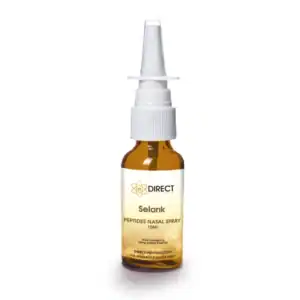
Selank Nasal Spray
£42.58 – £79.16Price range: £42.58 through £79.16 Select options This product has multiple variants. The options may be chosen on the product page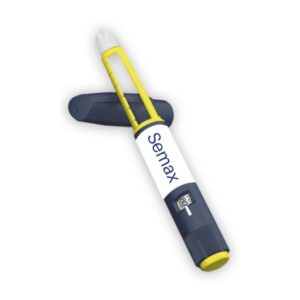
Semax Pre-Mixed Pen 2mg Peptide
£25.19 – £68.01Price range: £25.19 through £68.01 Select options This product has multiple variants. The options may be chosen on the product page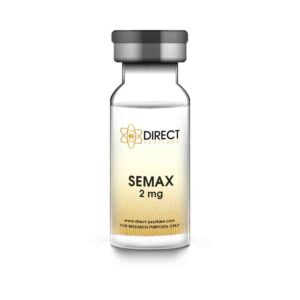
Semax Peptide Vial
£15.99 – £58.87Price range: £15.99 through £58.87 Select options This product has multiple variants. The options may be chosen on the product page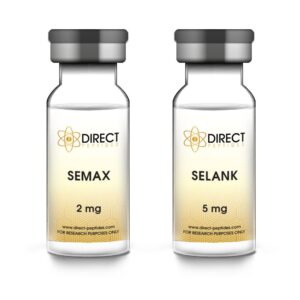
Semax Selank Peptide Stack
£29.50 – £38.42Price range: £29.50 through £38.42 Select options This product has multiple variants. The options may be chosen on the product pageALL CONTENT AND PRODUCT INFORMATION AVAILABLE ON THIS WEBSITE IS FOR EDUCATIONAL PURPOSES ONLY.
DISCLAIMER: These products are intended solely as a research chemical only. This classification allows for their use only for research development and laboratory studies. The information available on our Direct Peptides website: https://direct-peptides.com is provided for educational purposes only. These products are not for human or animal use or consumption in any manner. Handling of these products should be limited to suitably qualified professionals. They are not to be classified as a drug, food, cosmetic, or medicinal product and must not be mislabelled or used as such.